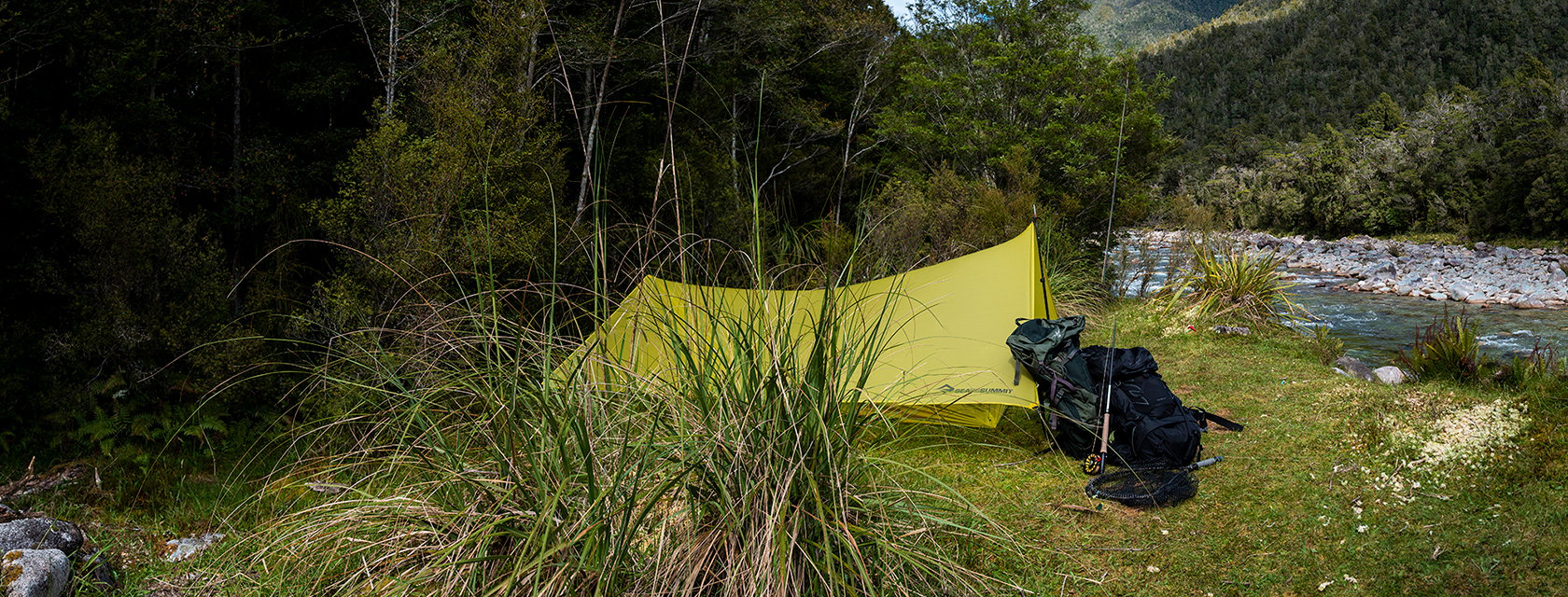
Choosing the right tent or shelter
New Zealand weather is notoriously destructive to most tents designed for a more benign set of continental conditions. Ultimately you shouldn’t really be out in adverse weather but sometimes the length of the trip will just dictate this for you. Wind is the great leveller here, both for chill and the amount of pressure it puts on your shelter’s engineering limits. Your shelter is after all, a safe haven to get out of the elements if the need arises.
We spoke to two of our brand ambassadors, Ross Mackay and Jim Young, about what shelters they choose when they are out in our back country. This is how they factor weather, season, what and where the mission is, and weight vs durability into their decision making.
What main factors do you consider when you're choosing a shelter?
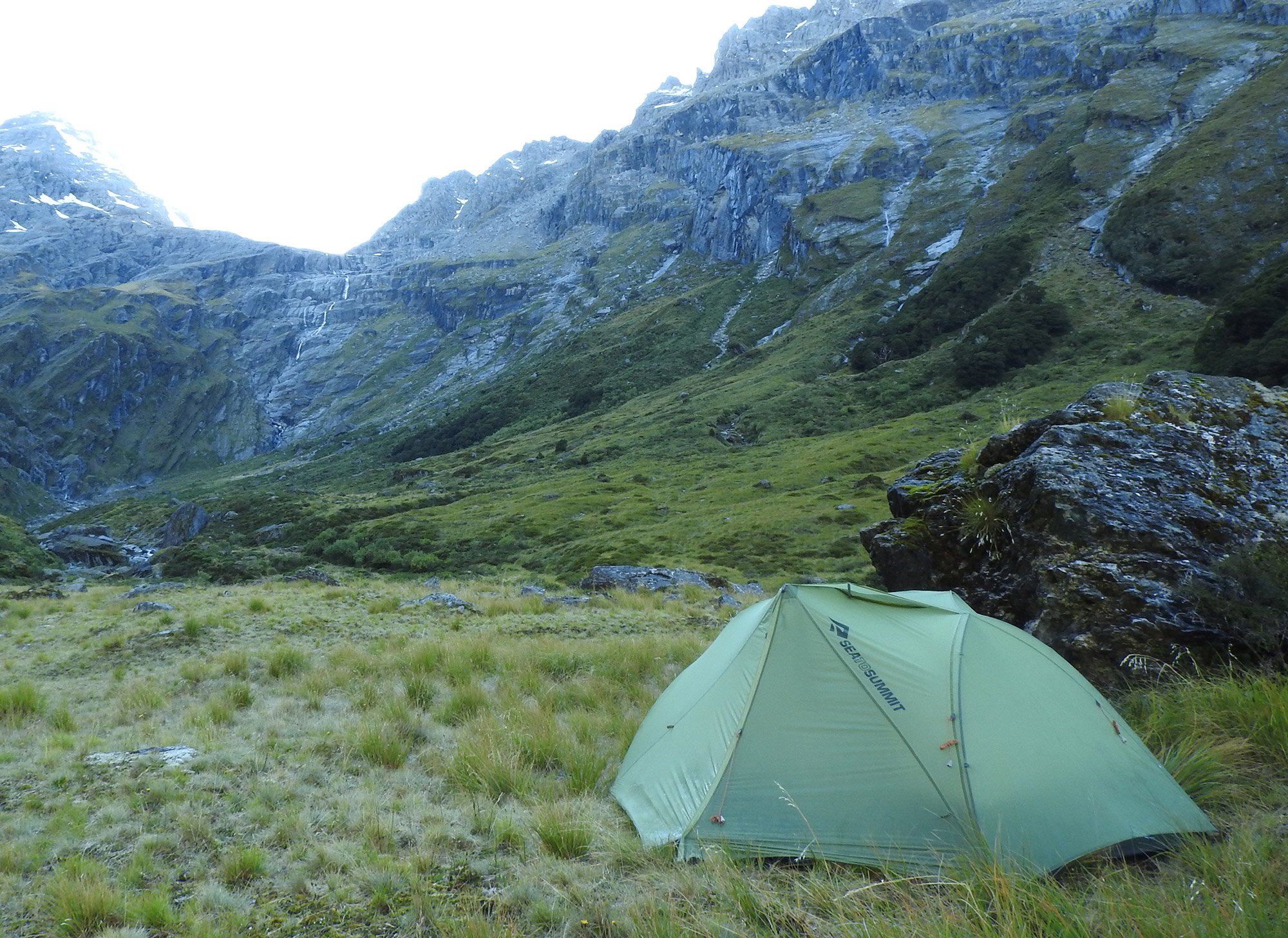
RM: How I choose shelter for my trips is mostly dictated by what the weather gods are about to share and the distance/remoteness I am travelling. The last thing I want is an inappropriate shelter that was just designed for a different set of circumstances blown flat or disappearing over the ridge to my left.
I start with weight vs remoteness, then go to the space I have to work with. The space required for a 10-day trans alpine trip and a 7-day bike packing vigil is different to a nice little overnight jaunt to your favourite backcountry valley.
JY: My main take is how it functions for the mission at hand, skiing vs climbing, snow vs. rock, alpine vs valley floor for example. I think of my shelter the same way you think of a house - what climate does it need to sustain and how long do I need to use it for. With shelter fabric and design being so advanced, weight is becoming less and less of an issue. Deciding on the right shelter becomes an equation of (amount of people + environment) X (weight / space limits) = the shelter for the mission.
Being able to use the weather forecast to decide if you need a heavy-duty shelter or can get away with something lighter weight is also a decision worth close consideration. You don't want to lose that gamble however!
When does saving weight matter?
RM: The juggle of energy output vs weight carried can either leave you with some gas in the tank after a 12hr day, or moving at snail’s pace, not hitting your distance targets and being completely rinsed at the end of the day if you are carrying too much on your back. Add in the winter dynamic and the gear requirement will send the weight of your bag through the roof, so be realistic about your outputs and the actual weight that your bag ends up.
JY: Weight has become more of a priority for me in recent times. As soon as you have to carry it, weight is very important so having a rationale for taking something larger / heavier is key. Basing this decision around weather is a good starting point to work backwards from. If encountering poor weather is inevitable on your trip then durability is king. You can't risk a trip being ruined with a shredded tent! Save the light weight for the fine spells.
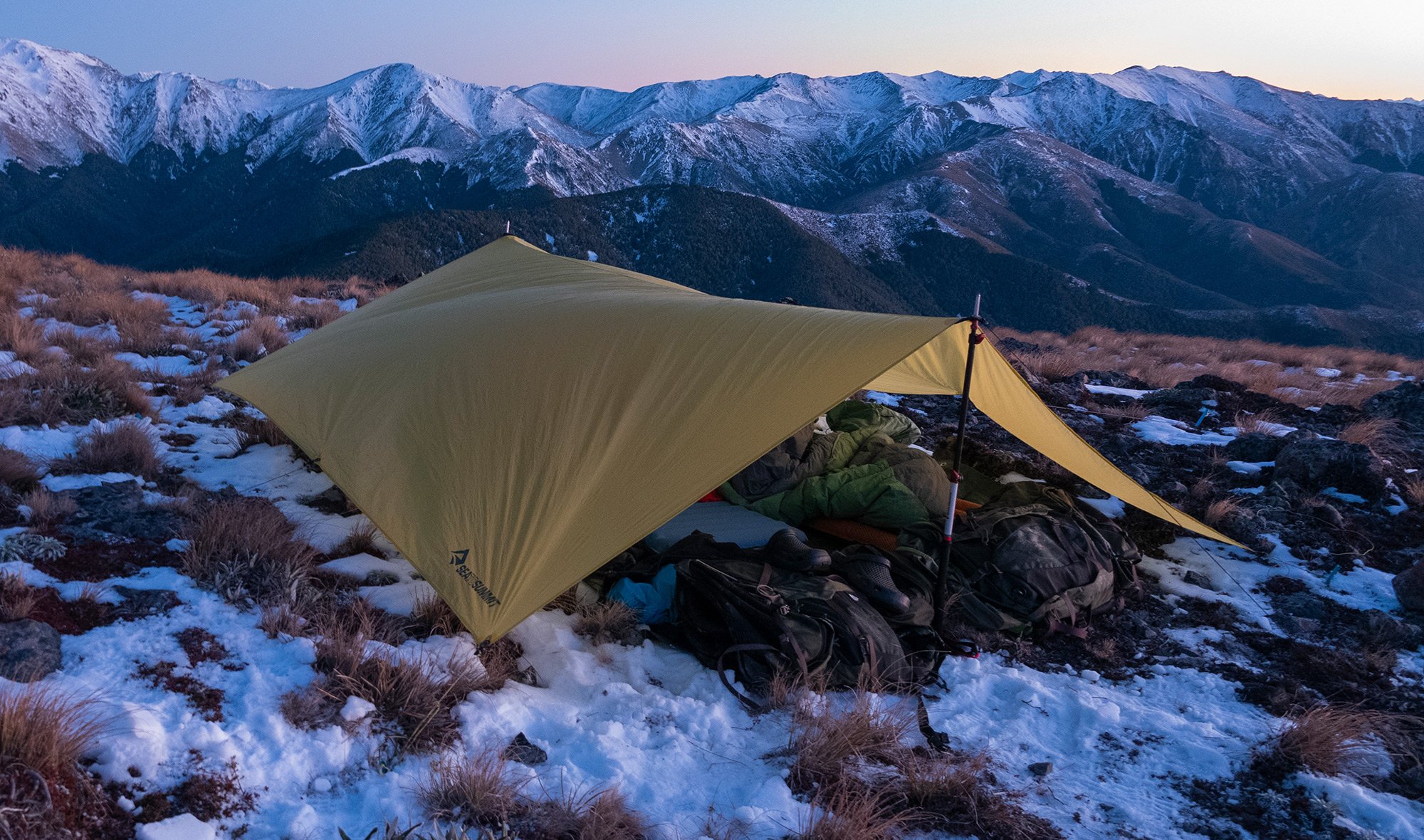
JY: For emergency shelter, I typically carry a 4 PAX Bothy Bag type shelter to sit under in high winds, rain or snow. It won't be glamorous, but you will be warm and dry (hopefully!) Comfort in an emergency situation is a luxury not worth carrying extra weight for in my opinion. As long as we can survive the night warm and dry, that's good enough for me.
What is your go-to shelter?
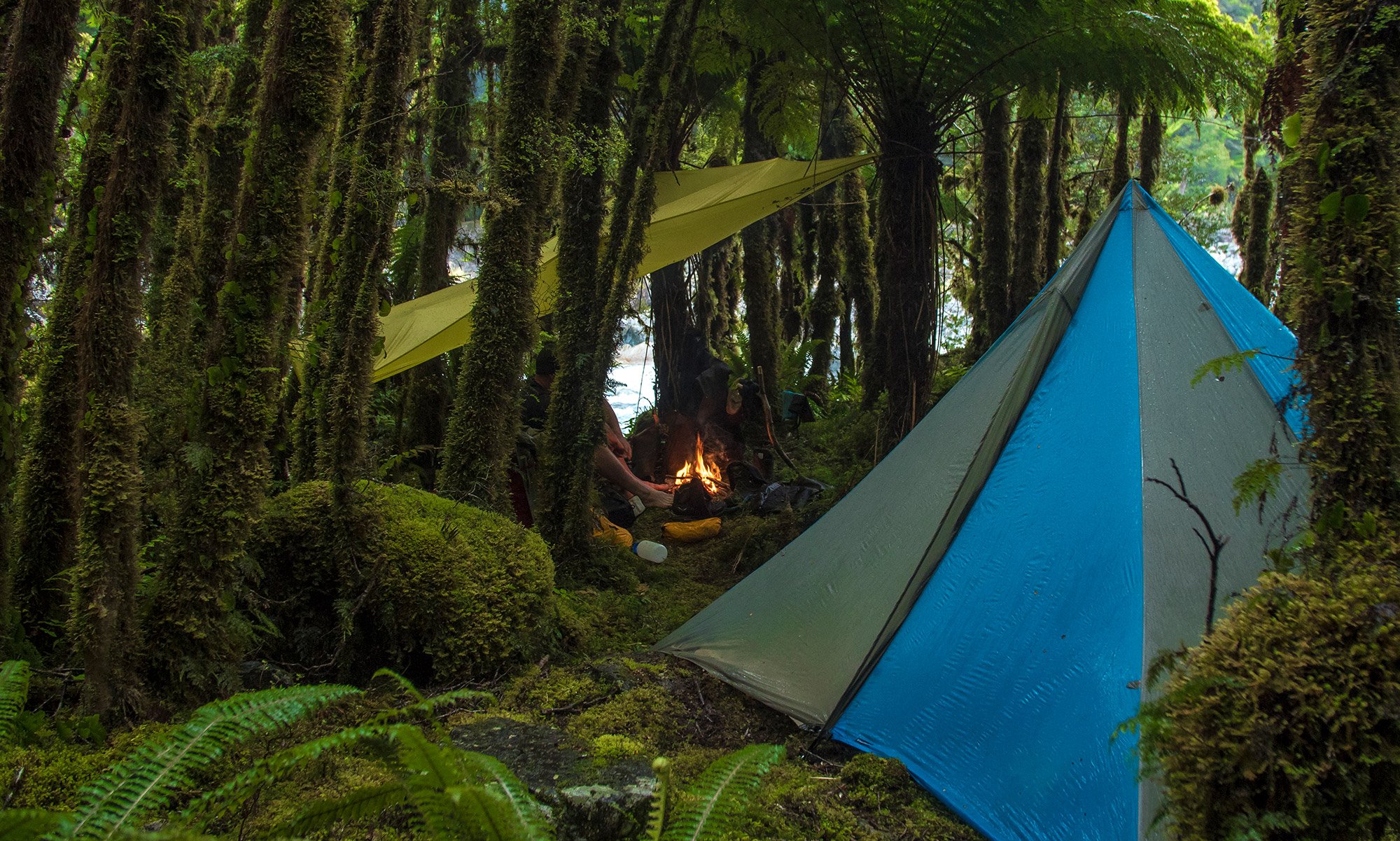
RM: For longer trips, I will carry the Sea to Summit tarp and/or the Black Diamond Mega Light pyramid tent. For biking the tarp is an excellent option for a quick to set up shelter for late finish and early start kind of days, great when the wind is low and you just need something to keep the early morning dew off. It’s quick to fold and roll, and it straps nicely to the down tube of a bike with the good ol’ BD ski strap. I have used these two in combo on a particularly rainy trip - we strung the tarp up in the trees so we could stand or sit under it and lit a fire so we could dry off and have some heat. It was just a nicer place to hang out then hunched inside the Mega Light, we unpacked and set beds up in the tent and just chilled with space to move under the tarp in the trees - perfect.
I have used the Mega Light for a number of seasons now, both summer and winter. It is a simple shelter that does great in a moderate wind range. It is a nice watertight space that will get you out of the rain and can be “dug in” to the snow to keep the wind out a bit if needed. It has room for up to 4 if you really need it but is a very comfy shelter for 2. From -15 to 30 deg this is a very versatile shelter, If the weather is going to be mostly fine and clear and not too windy, this is my go-to.
JY: My current tiebreaker is either my Black Diamond Mega Light 4 person shelter for ski trips or my Outdoor Research Alpine Bivvy bag for climbing trips.
The Black Diamond Mega Light is such a basic concept done very well. A simple floorless teepee style design allows for a very roomy space for up to 4 PAX depending on how you configure digging out the floor. It’s easy to cook in, has standing room if dug deep enough, heaps of gear stash, lightweight, and you can use ski poles as tent poles. On the flip side it’s not ideal in strong winds, needs the floor dug to set up, and you need lots of insulation from snow floor for sleeping.
The Outdoor Research Alpine Bivvy is an excellent single person goretex bivvy bag with a small-hooped pole to create a mini tent over your head. A timeless shelter option for the climber on the move. It’s light and small, waterproof, low profile, warm, and very fast to set up and pack. It can be a bit claustrophobic, does not breath great, and is really for fair weather only.
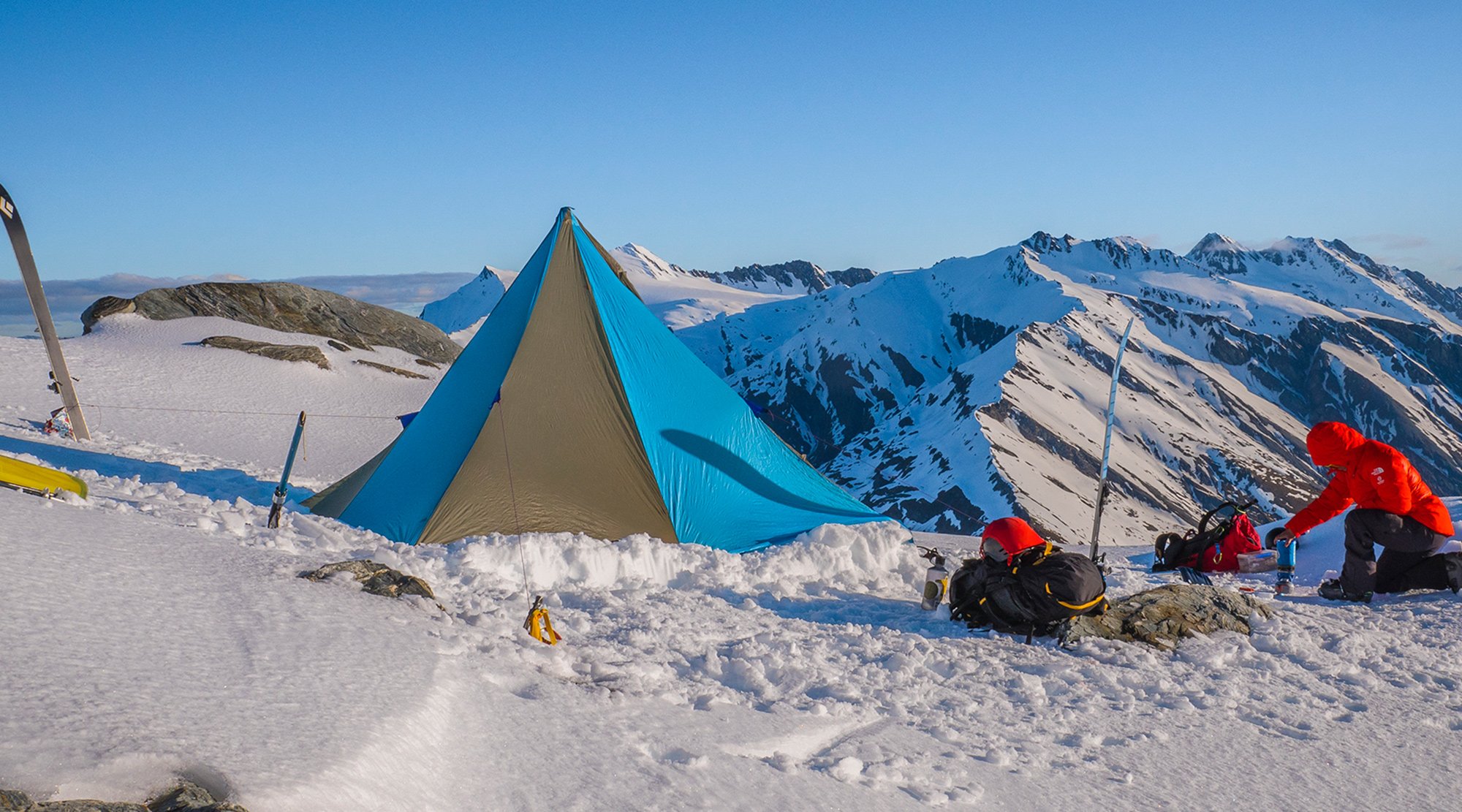
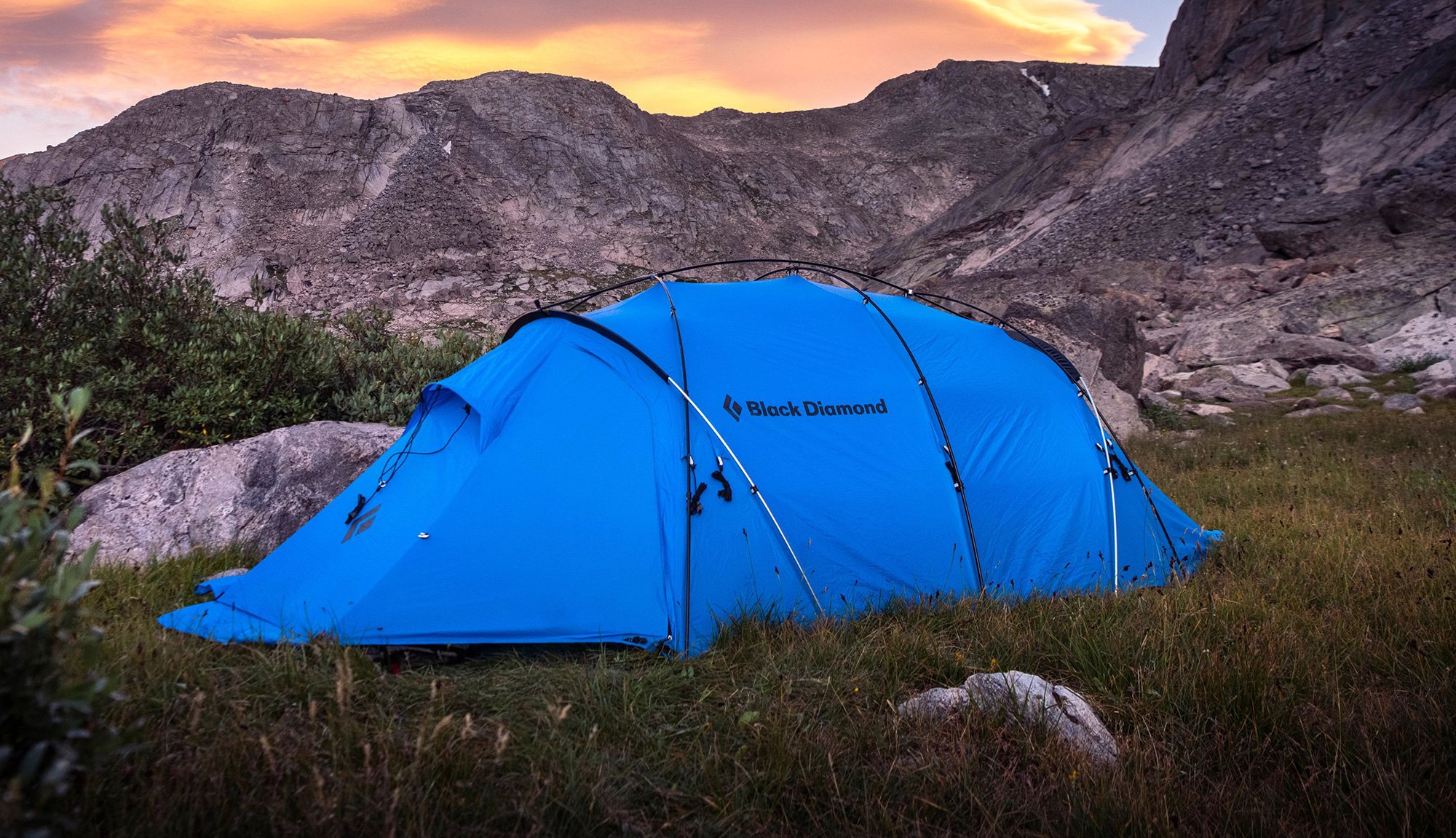
RM: If I’m heading to the cold alpine for an extended time, I’ll carry a 4 season 2 skin geodesic dome tent. These offer the most protection in almost any weather condition. They rarely fail in really terrible conditions, and you can build snow walls to manage the wind better and add a lot of protection. With correct anchoring in the snow these tents will go the distance and provide a nice comfortable place to retreat from the weather. They can be split up between the group. When packing them in my pack I never roll them, I always just stuff them into the spare nooks and crannies of my bag (food and day equipment on top) as its usually the first thing that comes out at camp to set up. Pull the tent out and jam an axe into the snow though one of the corner loops so it doesn’t blow away and you are good to start setting up.
Summer tent options such as the Sea to Summit Telos or Alto are great to use as the mesh sides and space they provide are key to comfort when the temps are on the climb. Quick to set up and plenty of space these architectural wonders are light to carry and can be split between the party as well.
RM: When you are choosing a shelter, look to where you are ultimately going to be using it, what weather you are going to experience and the load you are prepared to carry and for how long. There are lots of good options out there, do your research and make wise choices.
Product Info
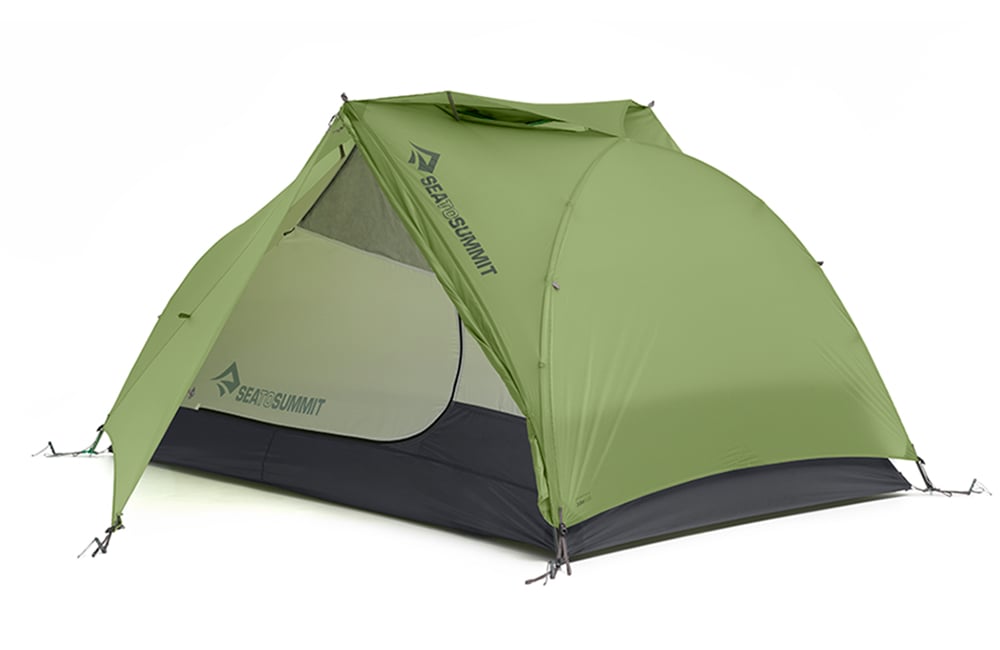
Sea to Summit Telos Plus
With best-in-class space, ventilation and multiple set-up modes; the two-person fully-featured Telos TR2 PLUS with full fabric inner, was designed for the ultimate three+ season camp experience.
- Patented Tension Ridge Architecture creates class-leading usable space, height and ventilation
- Oversized Apex Vent efficiently expels hot air to prevent condensation build-up
- Baseline and Apex Vents work together to create superior airflow and are easily adjusted from inside the tent
- Breathable Nylon fabric canopy with seam-taped 8000mm waterhead floor
- Dual layer adjustable vents on inner ceiling and doors allow airflow without compromising insect protection
- Easily convert the fly into a semi-open shelter with our patent-pending Hangout Mode
- FairShare Storage System allows you to distribute weight evenly between friends or within your pack
- Lightbar tent pole storage sack doubles as a light-diffusing lamp that can be secured to the ceiling
- Patent-pending and easy-to-use Quick Connect Tent Feet allow one-handed attachment and adjustments
- Ultimate versatility with six set-up configurations: Dry Set-Up, Fly Only, Inner Only, Partial Fly, Classic and Hang Out Mode
- Two large vestibules provide plenty of space to store gear and protect it from the elements
- Tall-wide doors for comfortable access and expansive views outside for a more liveable interior
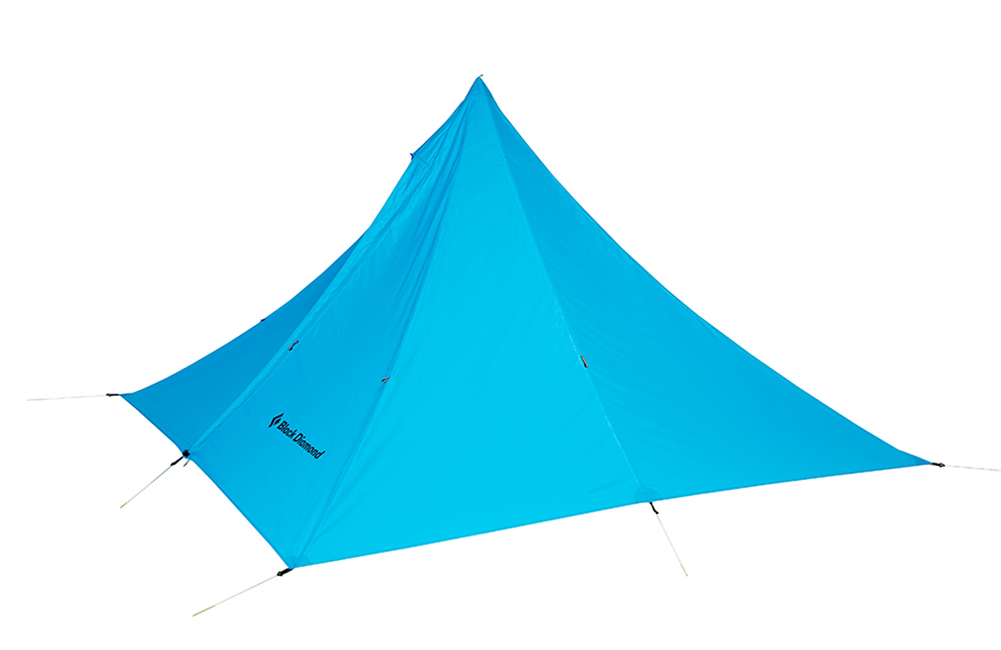
Black Diamond Mega Light
The Mega Light pulls duty for nearly any objective. As an ultralight shelter on long thru hikes to luxury glacier dining room, the Mega Light is versatile, yet simple. The 30d high tenacity polyester fabric is seam-sealed, durable, lightweight and does not sag in wet environments. A single carbon fibre centre pole and adjustable stake out points makes set-up quick and easy while mid panel guy-out points ensure the shelter is secure in high winds. This time-tested design is ready for the worst conditions right out of the bag and integrates seamlessly with the Mega Bug for the ultimate insect free shelter system.
- Four-person capacity with single zippered opening
- 30d polyester fabric does not sag in wet conditions
- Fully taped seams
- Carbon fibre centre pole included
- Pole Link Converter™ for ski/trekking pole set-up
- DAC stakes included
- Adjustable stake-out points
- Mid panel guy-out points
- Reflective adjustable guy lines minimize stretch
- Compatible with ground cloth (not included)
- Compatible with Mega Bug inner tent
- Complies with FR regulation CPAI-84
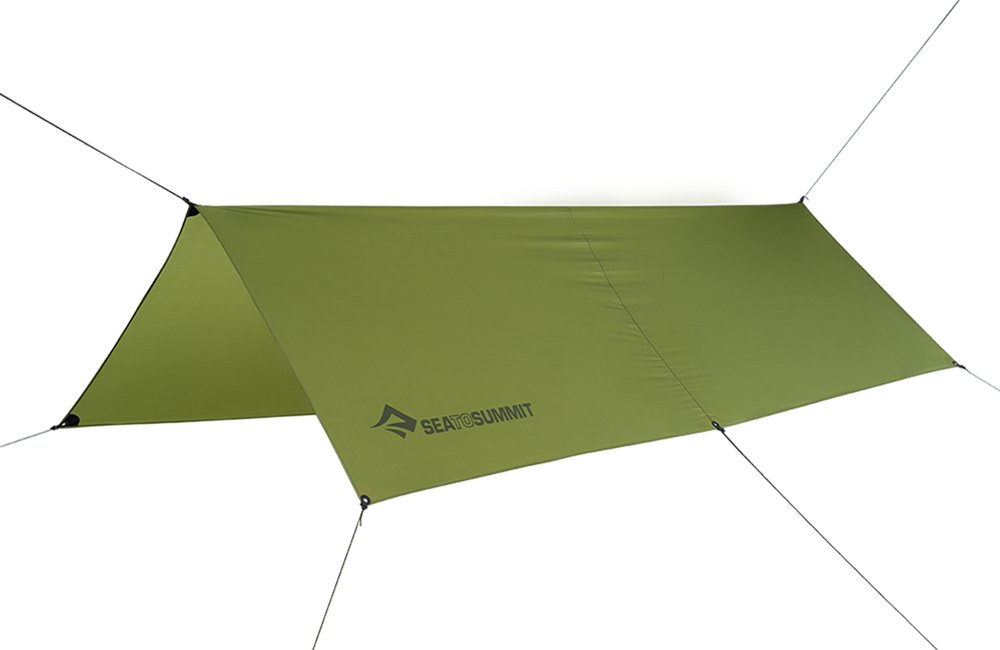
Sea to Summit Tarps
Escape to the wild with the versatile and ultra-lightweight Escapist tarp shelter for minimalist adventurers. The eight Hypalon™ tie-out points will each hold the tip of a trekking pole and have cord adjusters and reflective guy lines pre-attached. These eight versatile points help the Escapist achieve a wide variety of setup options and also attach easily to the Escapist Mesh Inners, available separately.
- Made from tape seam-sealed waterproof 15 Denier Sil/PU coated 1,200mm waterhead rated Nylon
- Eight Hypalon™ and bar-tack reinforced tie-out points
- Extremely lightweight and compact
- Reinforced corners with cord lock and guy lines (which can be adjusted from under the tarp)
- A trekking pole can be placed through the circular bar tack
- Large version comfortably sleeps two people with space for gear
Or add our new Jungle Hammock Tarp (pictured) to your Jungle Hammock Set for a sheltered, bug-free suspended sleep.
- Made from water and abrasion resistant, lightweight CORDURA® Nylon fabric
- Waterproof seams – double stitched and tape sealed
- Non-wicking anchor points with adjustable guy lines
- Siliconised outer surface with 2000mm waterhead
